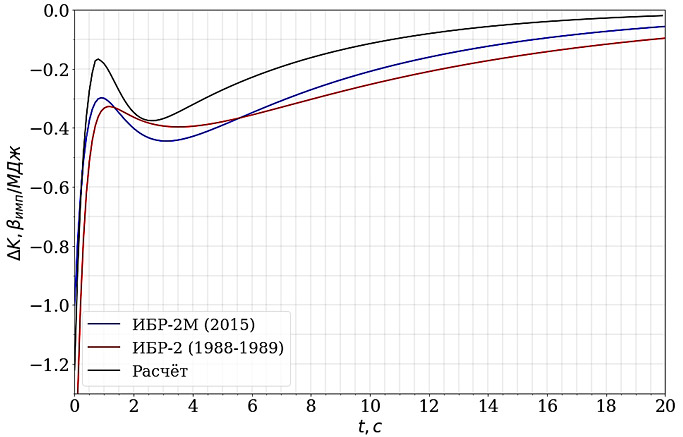
Electronic english version since 2022 |
The newspaper was founded in November 1957
| |
Returning to what was published
It is not elementary
In June of last year (No. 23), an article by the FLNP chief researcher Evgeny SHABALIN was published in our newspaper with a provocative headline: "It is elementary, Watson!" The subheadline made it clear to the reader that we are talking about the history of the "ancient" mystery of the self-oscillations of the power of the IBR-2 pulsed reactor.
On 16 January, at the FLNP seminar, Evgeny Pavlovich Shabalin, during his report "Theoretical calculation of the dynamic parameters of the IBR-2M reactor," made public his confession that "the investigation of the case of illegal self-oscillations" was not at all elementary, but rather very complex and confusing, yet it ended with the victory of the young team of physicists from the Sector of New Source and Moderators Complex headed by M.V.Bulavin. Evgeny Pavlovich also considers himself to be a member of this team, as he says, having thrown two inflated infinities, given to him for his birthday in the year of the Dragon, on a cupboard for a long time. So, the floor is given to the speaker.
The Dragon is my favorite animal. I wrote it and thought: is it an animal? In all the fairy tales the Dragon talks to people, he loves gold as much as people do, he has more than one head - many people have many of them and each of them has its own opinion. I won't even mention the ability to spew fire when necessary and not necessary... And most importantly - the first prototype of the pulsed reactor, more like a prototype, was called "Dragon" and working on it - "tickling the tail of a sleeping dragon" (Richard Feynman's definition). Maybe that's why our young team successfully completed the most complex work, similar to the construction of a giant puzzle of tens of thousands of elements, exactly this year.
Now, let's get serious. The difficulty of calculating the IRFB (this is what we call a certain function of time - "response" in Greek, an abbreviation of the concept of "impulse response to feedback" - the deviation of the neutron multiplication factor in response to the introduced disturbance of the reactor power) is that for its correct calculation (the IRFB function), the real three-dimensional geometry of the reactor with thousands of elements and the change in their parameters over time, such as temperature, displacement, deformation should be estimated. For the most part, the calculations had to use numerical techniques with the help of current packages (ANSYS, FINIX, Serpent, others) and implementation on high-speed computers. The IRFB function for diagnosing the state of the reactor is nearly the same as a cardiogram for estimating human cardiac activity.

These are the very same IRFBs
I don't know whether it was done consciously or deliberately, but the process of meeting the task of constructing the IRFB looked reasonable, namely: in the team, it was possible to clearly identify leaders, the ones that set tasks, defined the techniques of approach and estimated the validity of the decision (Alexander Verkhoglyadov and Maxim Podlesny) and performers that provided the calculation process itself (Hassan Akhmed, Ivan Kushnir, Yakov Vdovin, Valentina Verkhoglyadova). And most importantly, there were no disputes that were not on the merits, unproductive competitions of "who is faster"; in constant practice, there was frequent communication, familiarization of partners with the achieved results and discussion of errors. It is no exaggeration to say that it was the collective work that determined the positive result.
And the result is the following: the theoretically calculated IRFB function repeats the experimentally measured one with good accuracy. The reader will say: "So what? Nothing new was discovered." No, what is new and very important is that each of the three components of the calculated curve corresponds to a certain physical process in the reactor that was impossible to observe experimentally. One of the three processes was not predicted in advance at all. And what's more: the parameters of these processes are known today that opens up the possibility of conscious optimization of the reactor operating mode and a reliable estimation of the capabilities of promising projects of a new pulsed reactor.
I am happy as for the third time in my long life "in harmony with the reactor", I celebrate a collective victory over an extremely difficult task (the first was the IBR-2 design and launch and the second was cold moderators on mesitylene balls). My young colleagues passed the exam in the physics and technology of pulsed reactors with flying colors. Today, they can more confidently walk the path started by D.I.Blokhintsev, Yu.Ya.Stavissky, F.L.Shapiro, I.M.Frank and other veterans of FLNP and JINR. Have a smooth path, my young friends!
Olga Tarantina